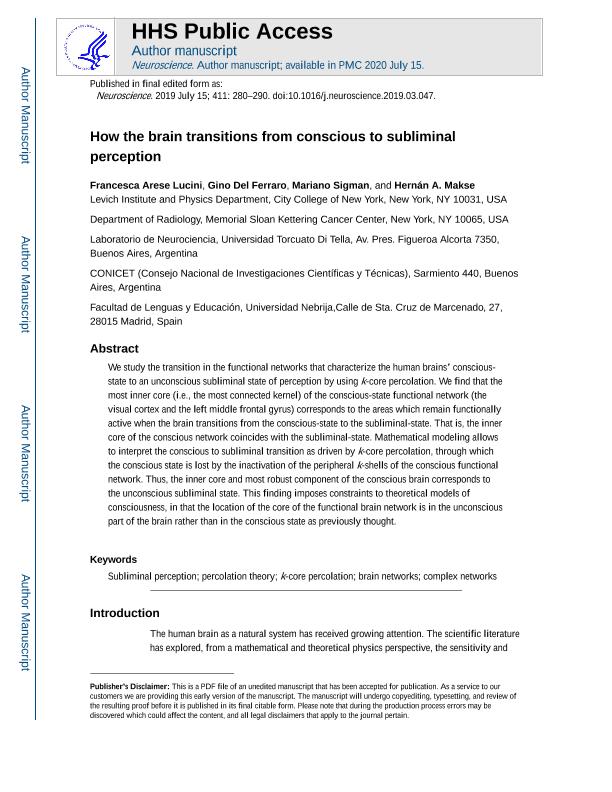Artículo
How the brain transitions from conscious to subliminal perception
Fecha de publicación:
15/07/2019
Editorial:
Pergamon-Elsevier Science Ltd
Revista:
Neuroscience
ISSN:
0306-4522
Idioma:
Inglés
Tipo de recurso:
Artículo publicado
Clasificación temática:
Resumen
We study the transition in the functional networks that characterize the human brains’ conscious-state to an unconscious subliminal state of perception by using k-core percolation. We find that the most inner core (i.e., the most connected kernel) of the conscious-state functional network corresponds to areas which remain functionally active when the brain transitions from the conscious-state to the subliminal-state. That is, the inner core of the conscious network coincides with the subliminal-state. Mathematical modeling allows to interpret the conscious to subliminal transition as driven by k-core percolation, through which the conscious state is lost by the inactivation of the peripheral k-shells of the conscious functional network. Thus, the inner core and most robust component of the conscious brain corresponds to the unconscious subliminal state. This finding imposes constraints to theoretical models of consciousness, in that the location of the core of the functional brain network is in the unconscious part of the brain rather than in the conscious state as previously thought.
Archivos asociados
Licencia
Identificadores
Colecciones
Articulos(SEDE CENTRAL)
Articulos de SEDE CENTRAL
Articulos de SEDE CENTRAL
Citación
Arese Lucini, Francesca; Del Ferraro, Gino; Sigman, Mariano; Makse, Hernán Alejandro; How the brain transitions from conscious to subliminal perception; Pergamon-Elsevier Science Ltd; Neuroscience; 411; 15-7-2019; 280-290
Compartir
Altmétricas




